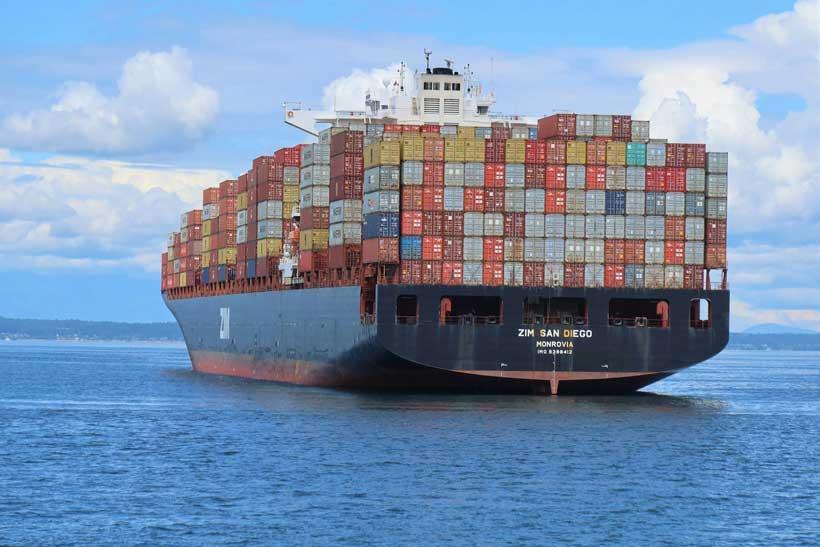By
Prof. Engr. Zamir Ahmed Awan
Africa-Press – Mauritius. The United States, under President Trump’s administration, implemented a series of tariff measures targeting various countries that had long enjoyed access to the vast American market with minimal trade barriers. This move, framed as a strategy to ensure trade reciprocity, marked a significant shift in global trade dynamics. While some viewed it as a corrective measure against unfair trade practices, others saw it as the initiation of a global trade war that could destabilize economies worldwide.
The Rationale Behind US Tariff Policies
For decades, the US maintained a liberal trade policy, allowing imports with low or no tariffs. However, many of its trading partners imposed significant tariffs on American goods, creating a trade imbalance. The new tariff policies aimed to address this asymmetry, ensuring that if a country-imposed restrictions on US goods, it would face similar restrictions in return. This approach, grounded in the principle of reciprocity, sought to protect American industries, jobs, and economic interests.
Countries Most Affected by the Tariff Policies
Several economies that heavily depended on exports to the US faced immediate setbacks due to these tariffs. Among the most affected were:
China: The largest exporter to the US, China faced tariffs on billions of dollars’ worth of goods. This led to a decline in Chinese exports to the US, prompting Beijing to retaliate with tariffs on American products, particularly targeting agricultural and industrial goods.
European Union (EU): European manufacturers, especially in the automotive and steel sectors, were significantly impacted. German carmakers, French wine producers, and other industries faced reduced access to the US market.
Canada and Mexico: As part of NAFTA renegotiations, both countries were subject to new tariffs, particularly on steel and aluminum. The renegotiated USMCA (United States-Mexico-Canada Agreement) sought to address some of these concerns, but initial disruptions were notable.
India: The US withdrew India’s Generalized System of Preferences (GSP) status, which had allowed many Indian products duty-free entry into the US market. In retaliation, India imposed tariffs on American agricultural and industrial products.
South Korea and Japan: While both countries have strategic economic ties with the US, they faced increased tariffs on certain exports, prompting negotiations to secure favorable trade agreements.
Adverse Impacts on Global Trade and Economy
The imposition of tariffs and subsequent retaliatory measures had far-reaching consequences:
Disrupted Supply Chains: Many multinational companies relied on complex global supply chains that were suddenly burdened with higher costs, leading to increased prices for consumers and businesses.
Reduced Global Trade Volumes: The uncertainty and increased costs led to a decline in global trade, with the WTO predicting a potential slowdown in global GDP growth.
Market Volatility: Stock markets reacted negatively to trade tensions, leading to fluctuations in investor confidence.
Economic Slowdown: Countries dependent on exports suffered economic slowdowns as demand for their goods declined.
Countermeasures by Affected Nations
To mitigate the impact of US tariffs, affected countries adopted several strategies:
Diversification of Trade Partners: Many countries sought alternative markets to reduce dependence on the US. For example, China increased its trade with the European Union, Latin America, and Africa.
Regional Trade Agreements: Countries accelerated negotiations on regional trade deals. The Comprehensive and Progressive Agreement for Trans-Pacific Partnership (CPTPP) and the Regional Comprehensive Economic Partnership (RCEP) gained momentum.
Subsidies and Support for Domestic Industries: Governments provided financial aid and subsidies to industries most affected by tariffs.
Legal Action: Some nations took their grievances to the World Trade Organization (WTO), seeking arbitration against US tariff measures.
The Emergence of New Trade Blocs and Patterns
As trade relationships evolved, new trading blocs and patterns emerged:
China-led Alliances: China strengthened economic ties with ASEAN nations, Africa, and Latin America, promoting the Belt and Road Initiative (BRI) to create new trade routes and markets.
EU-Asia Collaborations: The EU deepened trade relations with Asian countries, signing agreements with Japan and Vietnam to reduce tariff dependencies on the US.
African Continental Free Trade Agreement (AfCFTA): African nations sought to enhance intra-continental trade, reducing their dependence on Western markets.
Opportunities for Emerging Economies
While the tariff war disrupted global trade, it also created opportunities for certain economies:
Vietnam: Many companies shifted manufacturing from China to Vietnam to avoid US tariffs, boosting its export sector.
Bangladesh: The country’s textile industry gained traction as buyers sought alternatives to China.
Turkey: As an emerging market with strategic trade links, Turkey positioned itself as a key player in diversifying supply chains.
Latin American Countries: Nations like Brazil and Mexico expanded their agricultural exports to China, benefiting from the US-China trade dispute.
African Nations: With China reducing dependence on US imports, African economies supplying raw materials found new avenues for growth.
Conclusion
The imposition of tariffs by the US and the subsequent global trade adjustments marked a pivotal moment in international trade. While some countries suffered economic setbacks, others found new opportunities to integrate into global trade networks. The restructuring of global trade patterns underscores the dynamic nature of economic relations and highlights the importance of adaptability in an ever-changing geopolitical landscape. As the world adjusts, those nations that remain agile, diversify their trade relationships, and invest in strategic industries will likely emerge stronger in the new global order.
moderndiplomacy
For More News And Analysis About Mauritius Follow Africa-Press







